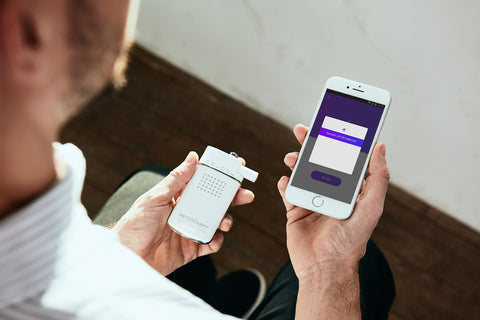I'm sure that the majority of you reading this have heard of the keto diet prior to this article, but how many of you know what that diet fully entails? In this article, we hope to provide you with some insight as to what ketosis is, what ketones are, and how they are directly correlated with the keto diet.
We will first start by explaining the difference between what ketosis, and what ketones are. Ketosis is a metabolic state which is characterized by elevated levels of ketone bodies in the blood, with normal glucose levels and no metabolic acidosis (a disorder that occurs when the body produces excessive amounts of acid, such as ketoacids or lactic acid) occurring. In layman's terms, this is when your body enters into a metabolic process whereby the liver produces ketones that are stored in your fat, and in your muscles. Ketones will then be burned to cause energy for your body, making them your body's the energy source. Since your body usually depends on carbohydrates as a fuel source, ketones will then be the replacement fuel source, helping you lose weight.
Ketones on the other hand are chemicals that have been made in your liver- which are produced when you do not have enough insulin within your body that can be turned into sugar. Since there is no other source for your body to turn into energy, your body uses fat instead, which is eventually turned into an acid- ketones to be specific. To sum it up, ketones are the primary fuel source of your body, thus replacing carbohydrates- effectually becoming the replacement and helping you lose weight.
With that being said, exercise will also affect your ketone levels, but the effects differ from person to person. Generally speaking, anaerobic exercise will decrease circulating ketones, cause blood glucose to go up slightly, and cause ketones to decrease for a short period of time. With aerobic exercise, such as jogging, swimming, cycling, etc. there will generally be an increase in circulating ketones. Bear in mind that this does not mean you shouldn't perform anaerobic exercise while on a ketogenic diet. Watching your ketone levels will help you understand how your body responds to various foods and activities, and knowing how your body responds will help you adjust your nutrition and food choices to properly fuel your body and maintain optimal ketone levels. Essentially, exercise and the keto diet work in tandem, but if you opt out of exercise, you would still lose weight.
The keto diet focuses on raising your ketones by adhering to the keto diet, which is able to be measured. There are many ways to measure your current ketone levels, and we will explain the measuring devices here:
Urine Testing
Originally developed for people with type 1 diabetes to determine if they’re at immediate risk for diabetic ketoacidosis, a potentially life-threatening condition. The color corresponds to the concentration of ketones in your urine, which can range from no ketones to high concentrations. The darker the colour, the higher your ketone levels. The process of using keto strips looks like this:
- Wash your hands, then take a urine sample in a small container.
- Immerse the absorptive end of the strip into the sample for a few seconds, then remove.
- Wait for the amount of time outlined on the package for the strip to change color.
- Compare the strip with the color chart on the packaging.
- Dispose of the urine and strip in an appropriate manner before washing your hands.
Blood Testing
Originally designed for people with type 1 diabetes, they also appeal to those following a ketogenic diet as a more accurate way to measure ketosis.
How to use it:
- Wash your hands.
- Load the lancet with the needle, following the directions provided.
- Insert a blood ketone strip into the ketone meter.
- Prick your finger to draw a small drop of blood using the lancet.
- Let the strip come in contact with a drop of blood and check the results.
- Dispose of the strip and lancet as suggested in the directions
Breath Ketone Test
Simple, effective, non-invasive, and safe!
The final, least invasive, and easiest way to perform a breath ketone test would be to use a breath-ketone tester. The way this device works is much like a breathalyzer, and measures the amount of ketones contained within your breath.
How to use it:
- Turn the device on
- Wait for the device to boot
- Blow into the device when prompted
- Ketone level will be displayed on the screen
Find out more about the KetoScan Mini Ketone Breath Tester on our website:
References:
Ketone Testing, https://www.diabetes.co.uk/diabetes_care/testing-for-ketones.html
Ketones in Urine, https://medlineplus.gov/lab-tests/ketones-in-urine/






